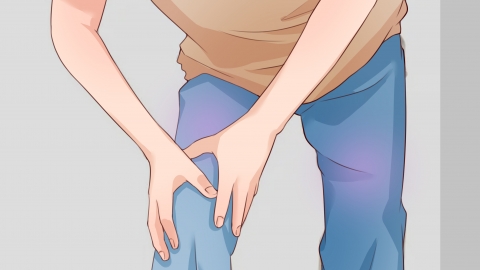What causes pain in the front of the lower leg bones in adolescents?
Generally, the main causes of pain in the front of the shinbone (tibia) in adolescents include growing pains, overexertion from exercise, tibial periostitis, Osgood-Schlatter disease (tibial tuberosity osteochondritis), and osteoid osteoma. If discomfort occurs, it is recommended to seek timely medical evaluation and treatment at a正规 hospital. Specific explanations are as follows:
1. Growing Pains
Adolescents experience rapid bone growth, while muscles and tendons develop more slowly. This mismatch can lead to traction on tissues surrounding the tibial bone in the lower leg, causing pain—often occurring at night. Reduce intense physical activity; massage the calves during rest periods and apply local heat to relieve discomfort. Ensure adequate daily intake of calcium and vitamin D.

2. Overexertion from Exercise
Frequent running or jumping, especially without proper warm-up, leads to repeated pulling of the tibial bone by calf muscles, irritating the periosteum and causing pain that worsens after exercise. Reduce the frequency and intensity of physical activity, ensure thorough warm-up before exercising, apply cold compresses to the lower leg afterward, and avoid sudden increases in workout volume.
Chronic overuse causes congestion and edema of the tibial periosteum, resulting in an aseptic inflammatory response. Symptoms include tenderness along the front of the shinbone, often accompanied by swelling. Under medical guidance, medications such as ibuprofen sustained-release capsules, diclofenac sodium enteric-coated tablets, or Huoxue Zhitong capsules may be used. Wearing calf supports and temporarily avoiding strenuous activities are also recommended.
4. Tibial Tuberosity Osteochondritis (Osgood-Schlatter Disease)
In adolescents, the growth plate at the tibial tuberosity has not yet closed. Repetitive knee flexion movements pull on this growth plate, triggering inflammation and causing pain just below the front of the shinbone—especially noticeable during knee bending or straightening. Under medical supervision, medications such as celecoxib capsules, etoricoxib tablets, or vitamin C supplements may help. Avoid squatting, kneeling, and jumping. In severe cases, surgical intervention such as drilling of the tibial tubercle may be necessary.
5. Osteoid Osteoma
This benign tumor arises from abnormal proliferation of osteoid tissue, which stimulates nerves in the surrounding periosteum, leading to persistent dull pain in the anterior shinbone—typically worsening at night. Under medical guidance, analgesics such as naproxen sodium tablets, acetaminophen (paracetamol), or indomethacin enteric-coated tablets may be prescribed. Once diagnosed, surgical removal of the osteoid osteoma is usually required. Post-surgery, early weight-bearing should be avoided.
In daily life, always perform adequate warm-up exercises before physical activity and wear appropriate athletic footwear. Control exercise intensity to prevent overfatigue, maintain a balanced diet rich in calcium and protein, rest promptly when pain occurs, and avoid pushing through pain. Regular skeletal development check-ups can help detect abnormalities early.








